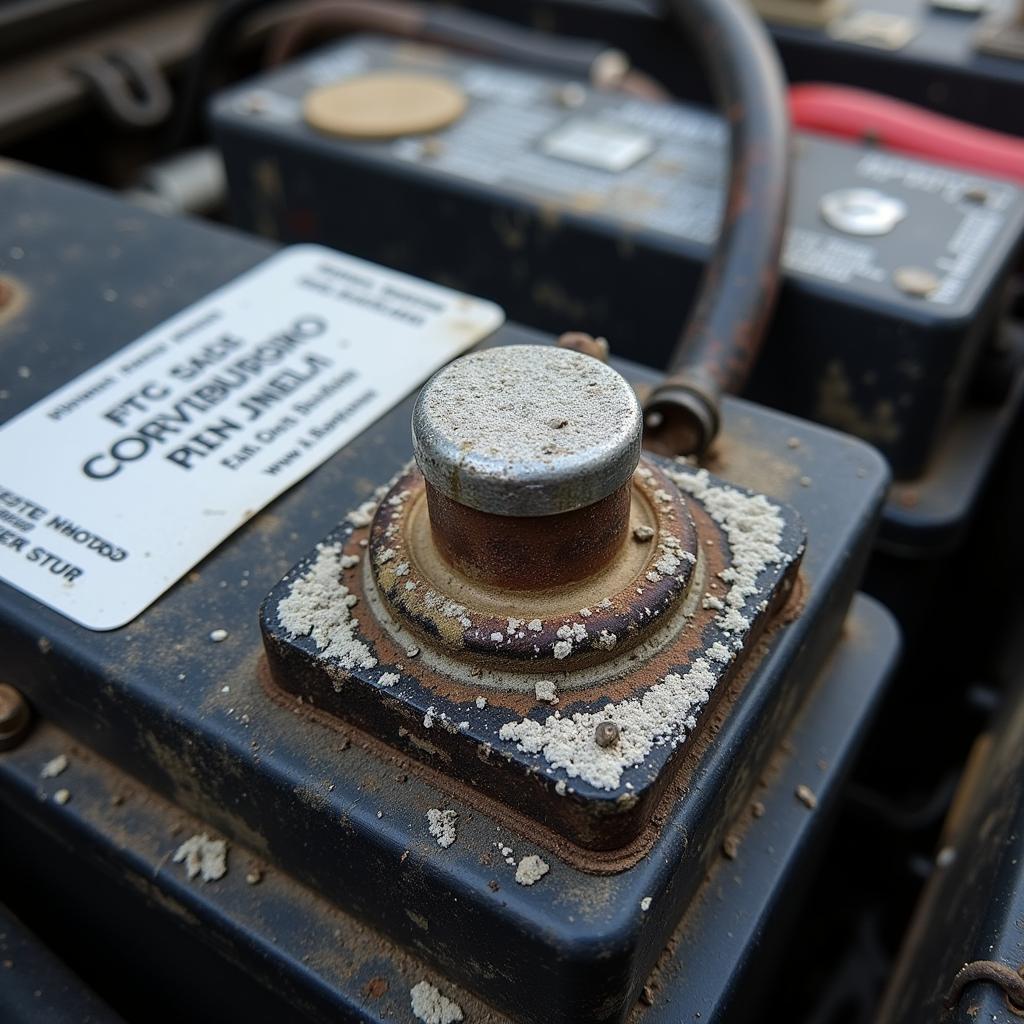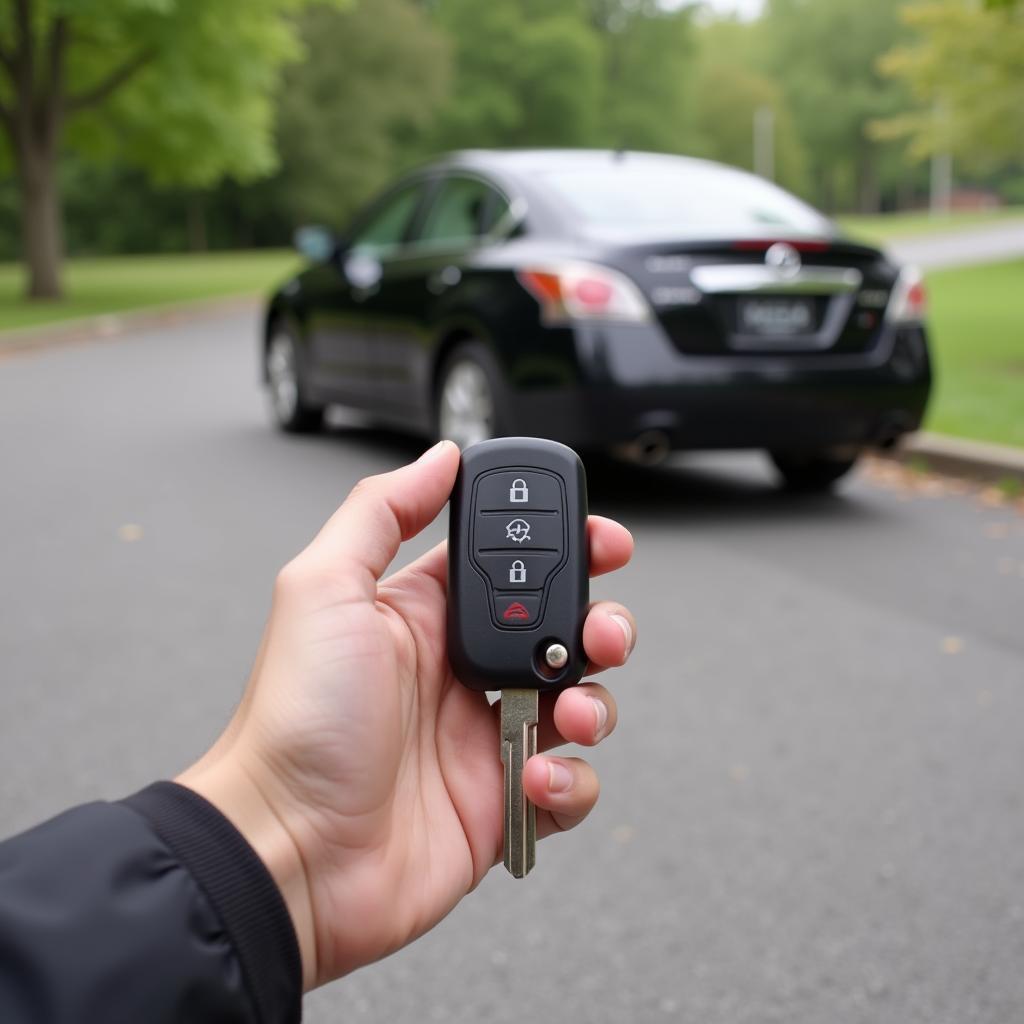A dead car battery is a frustrating experience, leaving you stranded and needing a jump start. Understanding the reasons your car battery dies can help you prevent this inconvenience and keep your vehicle running smoothly. From simple issues like leaving your lights on to more complex problems like parasitic drains, this guide will cover everything you need to know.
Common Culprits Behind a Dead Car Battery
Several factors can contribute to a dead car battery. Identifying the root cause is crucial for effective troubleshooting and preventing future occurrences. Some common culprits include:
- Leaving lights or accessories on: This is a classic mistake that drains the battery overnight. Modern cars have more electronics, which can add to the drain even when the car is off. Remember to double-check your lights, interior lights, and accessories before leaving your vehicle.
- Extreme temperatures: Both hot and cold weather can affect your car battery’s performance. Extreme heat can accelerate the chemical reactions inside the battery, leading to faster degradation. Conversely, extreme cold can slow down these reactions, making it harder for the battery to provide enough power to start the engine.
- Old age: Like any other component, car batteries have a limited lifespan, typically around three to five years. As a battery ages, its internal components degrade, reducing its ability to hold a charge.
 Old Car Battery with Corrosion on Terminals
Old Car Battery with Corrosion on Terminals
If your Noco GB40 isn’t starting your car, it might be due to a faulty booster pack or a severely discharged battery. Check out our guide on noco gb40 not starting car for troubleshooting tips.
Why Does My Car Battery Keep Dying?
Sometimes, a car battery keeps dying repeatedly, indicating a more persistent issue. This can be particularly frustrating and requires more in-depth investigation. Here are some reasons why your car battery keeps dying:
- Parasitic drain: This refers to a continuous draw of power from the battery even when the car is off. It can be caused by faulty wiring, malfunctioning components, or aftermarket accessories that are improperly installed. Identifying and fixing a parasitic drain often requires specialized diagnostic tools and expertise.
- Alternator problems: The alternator is responsible for recharging the battery while the engine is running. A faulty alternator can prevent the battery from being properly recharged, leading to repeated dead battery situations.
- Short trips: Continuously driving short distances without allowing the alternator enough time to fully recharge the battery can contribute to premature battery failure.
How to Diagnose Car Battery Problems
Diagnosing car battery problems involves several steps, including:
- Visual inspection: Check the battery for any visible signs of damage, corrosion, or leaks.
- Testing the battery voltage: Use a multimeter to check the battery’s voltage. A fully charged battery should read around 12.6 volts.
- Testing the alternator: Check the alternator’s output voltage while the engine is running. A healthy alternator should output around 14 volts.
If your car battery jump starts but won’t hold a charge, it could indicate a problem with the alternator or a parasitic drain. Explore our article on car battery jump starts but wont hold charge for more information. For those experiencing persistent battery drain issues, especially in trucks, our guide on truck battery keeps draining provides valuable insights and solutions.
Preventing Car Battery Issues
Preventing car battery problems is often easier and less costly than dealing with a dead battery. Here are some preventive measures:
- Regular maintenance: Have your battery tested regularly, especially during extreme weather conditions. Clean the battery terminals to prevent corrosion.
- Turn off accessories: Make it a habit to double-check that all lights and accessories are turned off before leaving your vehicle.
- Limit short trips: If possible, combine short trips or allow the car to run for a longer period to fully recharge the battery.
If you’re facing a situation where your dead battery is not jumping, you might find helpful advice in our article dead battery not jumping. Alternatively, if your battery is completely drained, our guide on my car battery is completely drained offers step-by-step instructions on how to handle the situation.
Conclusion
Understanding the reasons your car battery dies is crucial for preventing future occurrences and maintaining a reliable vehicle. By following the tips and guidelines in this article, you can prolong your battery’s life and avoid the frustration of a dead battery. Remember to perform regular maintenance, address any underlying issues promptly, and be mindful of your driving habits to ensure a healthy and functioning car battery.

